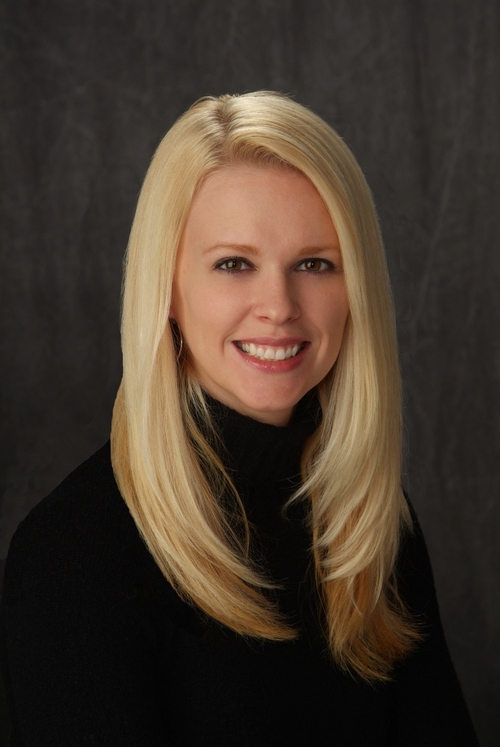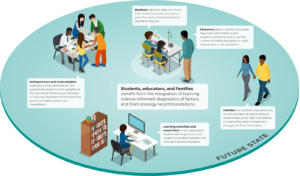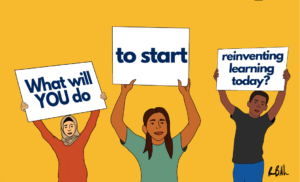Dynamic Master Scheduling for Student Success

It’s summertime, when school staff are enjoying slow days and taking multiple family vacations, right? Well, not exactly. Although master scheduling typically starts in January, this is also the time of year many school leaders are re-working and tweaking master schedules due to staff turnover, budget cuts and fluctuating enrollment numbers.
However, the master schedule has to be done and done well. It is the “blueprint of the school”–a critical piece in making more personal and innovative models of learning actually work within a school building. Whether it’s blended learning or project-based learning, or even dual enrollment programs, these approaches require re-thinking how time is used in the school day and year.
So how could technology help simplify this complex and time-consuming task?
“Master scheduling is an increasingly complex challenge that our principals grapple with as they attempt to balance the implementation of new national standards and the need to develop high-quality learning environments for all students,” said Cheryl Hibbeln, Executive Director of Secondary Schools, San Diego Unified School District. “Master scheduling is the sort of real-world challenge that technology is perfectly suited to address, facilitating greater input from staff and bringing transparency to an important equity lever for school communities.”
Which is why Adam Pisoni (co-founder of Yammer) and his team decided to help school leaders across the nation tackle this critical challenge with education startup Abl. Pisoni shares his personal story via video on why he created Abl. During his time in school he didn’t feel he was being challenged academically or being prepared for the future, so he chose to drop out his junior year. That time in his life has always lingered in his mind, and he felt that there had to be a way to make sure school worked for everyone.
He founded Abl to offer today’s students a chance to have a better experience than he did in school by providing school leadership with a way to evolve and move schools forward into the 21st-century, making them more interesting and personalized for students.
- Time management in schools is an important lever for change that is often overlooked, but it’s just as critical as curriculum or assessment.
- The role of the principal is often not understood, and schools have grown in complexity over the last few decades, making them difficult for principals to manage.
- There are a lack of tools and software available to help principals manage this growing complexity.
This research led Abl to develop what they felt was the missing piece in K-12 software. Abl calls this category Dynamic School Scheduling (DSS), and recently announced $7.5 million in Series A funding led by Reach Capital to back the creation of this software.
“Dynamic School Scheduling is flexible, collaborative, intelligent scheduling that helps school leaders view their school day through a new lens,” said Pisoni. “It makes master scheduling dramatically faster and provides actionable insights to help every school achieve its unique goals. It offers a single place for students, teachers, and parents to stay up to date, and allows the school to make real-time changes on the fly.”
DSS also handles everything from course requests to section planning to getting the data back into the student information system (SIS), and can be used in any size or type of school. Along with this theme of supporting schools in time management, Abl also has plans to expand its future product offering.
“We’re building a suite of applications starting with the master scheduling tool but moving on to other helpful tools as well,” Pisoni says. “For example, we’re looking at developing tools that help district leaders understand their shared resources and how time is used across their district, as well as tools that help schools manage their daily resources more efficiently. We’d also like to develop a tool that helps students with their course requests and academic programming.”
It’s plain to see that the roles of teachers and administrators have become more complex as we continue to define what students need to know and be able to do upon graduation. Implementing innovative models of learning will require a new set of innovative 21st Century tools (check out this Smart Bundle on Next-Gen Learning Platforms), as well as tools that support schools in the mechanics of day-to-day operation.
For more, see:
- Scheduling for Learning, Not Convenience
- The Platform Revolution That Will Power Personalized Learning
- Empowering Principals with High-Quality Data
Stay in-the-know with all things EdTech and innovations in learning by signing up to receive the weekly Smart Update.








0 Comments
Leave a Comment
Your email address will not be published. All fields are required.